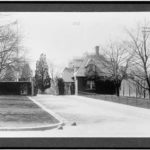Patients entering an asylum were frequently given sedatives or tonics, depending upon their physical state, as well as a strong laxative to clean them out. Warm baths were thought to be calming and were frequently prescribed for agitated patients. However, what might have begun as a soothing experience could develop into something close to torture in the extreme treatment called continuous bathing, which could last for hours or days.
Cold water was generally thought to be invigorating, acting as a non-pharmaceutical tonic. Cold water might also be used to “shock” patients out of a certain behavior. Wet pack treatments were versatile in that they acted as both a shock and a sedative. Patients were wrapped in wet sheet and shocked by the cold, but the thinking was that the body would soon warm the layer of air directly beneath the sheets and create a calming effect. Attendants particularly favored wet packs, since their supposed calming influence was enhanced by the fact that the patient couldn’t move and struggle if they tied the sheet to the bed.
None of these treatments seem to have been specifically invented for asylum patients. However, there was a world of difference when a patient took a treatment willingly and in relative luxury as part of a medical cure –as the wealthy did at medical spas–or were forced to endure a treatment they did not want, as often happened in asylums. Some treatments were so uncomfortable–or could be made so–that they were viewed as punishments by patients. Since there are many instances of attendants threatening patients with these water treatments, they were obviously misused in this way.








